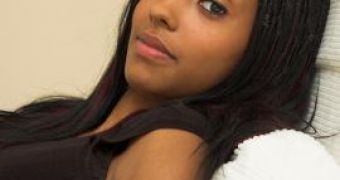Tired of taking piles of drugs? Here are the alternative (complementary) therapies. They are not largely taught in the colleges and many doctors are still skeptical. Still, over 32 % of the patients appeal to them (up to 33 % in Finland, and 49 % in Australia), in conditions in which they are rarely covered by medical assurances.
Some methods, such as applying a cold object over a burning zone, have been known for long, but they have largely been ignored. Now, hidrotherapy, employing water for treating various conditions, is greatly accepted by modern medicine. Using medicinal plants is as old as humankind. About 25 of the medicinal drugs we use today contain chemicals encountered naturally in plants or derived from them.
No doubt, the alternative medicine employs natural products, usually weaker and less dangerous than pharmaceutical drugs. It is more preventive and focuses on the lifestyle of the patient, his/her environment and factors influencing the disease, thus the person, not the diseased organ or a pathological state. Other counting factors are the disease's type, its stage and the general health state of the diseased person.
Here are some alternative medicines:
1.Medicinal plants. This is the oldest form of alternative medicine. Even if so old, by now relatively few medicinal plants have been investigated by the researchers. Not to mention that few studies focused on their negative effects.
Many medicinal plants proved effective against light depression, age-related memory loss, benign tumors. In North America, infusions made from the roots of black cohosh (Cimifuga racemosa) were used by the Natives against menstrual and birth issues. A 2,000 German product made of blak cohosh proved effective in easing the menopause symptoms.
People tend to regard the plant products as being more trusty than the synthetic ones, lacked of secondary effects. This is not true, as some plants can really have secondary effects.
A famous medicinal plant, used as a natural slimming and repercussive product, can increase blood pressure and heart rhythm.
20 % of the patients combine plant products with pharmaceutical drugs. Some plants increase blood's bleeding rate, and combined with drugs that increase blood's fluidity it can cause severe issues.
Ginseng or St John's wort can cause fluctuations of the blood pressure, which are very dangerous in case of anesthesia. Ginkgo, ginger or daisy impede blood's clotting, a great danger during the epidural anesthesia (near the spine), as a hemorrhage in this area can cause paralysis. St John's wort also increases the effect of some narcotics or anesthesia chemicals.
Moreover, there is not a quality guarantee for these products. They can be contaminated with heavy metals or pollutants. And many of these products are not what is labeled they are.
2.Nutritive supplements. Vitamins and minerals proved effective in treating many conditions, like anemia and osteoporosis, and preventing congenital malformations. But, if you overcome daily doses recommended by specialists, you can put to risk your health. They can impede the absorption or action of other nutrients, some with severe secondary effects. 3.Homeopathy, appeared during the 18th century, is based on the law of similitude and minidose. These remedies are prepared from successive dilutions of the curative agent, sometimes to such a degree that there's not even a molecule from the initial compound.
Homeopathy was proved to have some effects on asthma, allergies and child diarrhea. As these products are extremely diluted, they are considered safe. Homeopathy can be a complementary treatment, but it is not indicated in cases of emergency.
4.Chiropractic is based on the idea that cure can be brought by the correct alignment of the deformed spine. It specializes in techniques of manipulating the spine, aligning the vertebrae of the patients. It is very effective in cases of lumbar pain, against which traditional medicine is highly ineffective.
This must be practiced by a specialist, and manipulations on the neck area can be dangerous, due to risks of stroke or paralysis.
5.Massage. This is traditional in India and China. In Europe, this technique entered at the beginning of the 19th century, introduced by Per Henrik Ling (that's why it was called Swedish massage). It relaxes muscles, improves blood and lymph circulation, and removes toxins from the blood. Massages are prescribed for back pains, headaches, and digestive disturbances. 80 % of the diseases are associated with stress, and massage reduces the stress.
Contraindications in the case of massage are based on common sense: it won't be made on a burning spot or a foot with profound vein thrombosis.
6.Acupuncture refers to a group of techniques, employing very thin needles introduced in some body parts for achieving a therapeutic answer. Its efficiency seems to be given by the fact that it causes the release of neurotransmitters, like endorphins that ease pain and threat inflammations.
Some researches say it could safely replace the anesthetic chemicals. 104 conditions are recognized to be treated by acupuncture, including post-surgery pains, muscular pains, menstrual cramps, nausea and vomits caused by chemotherapy or pregnancy.
It rarely has secondary effects, but some patients say they experience pain, numbing, or tingles. The risk of infection is reduced by correct sterilization of the needles or by using one-use only needles.
7.The placebo effect. If you tell a group of persons they will receive an "effective" treatment (even if they receive in fact a non-active chemical), in almost 50 % of the cases, there will be a positive result. The placebo effect is based on auto-suggestion and works in the case of subjective symptoms, like pain, nausea, tiresome, dizziness, anxiety and depression.

 14 DAY TRIAL //
14 DAY TRIAL //